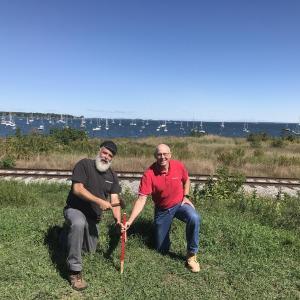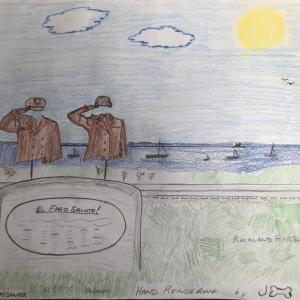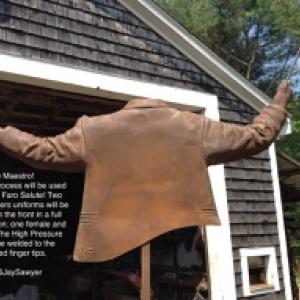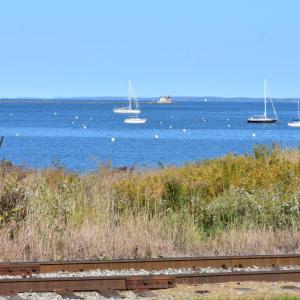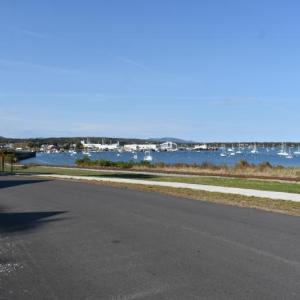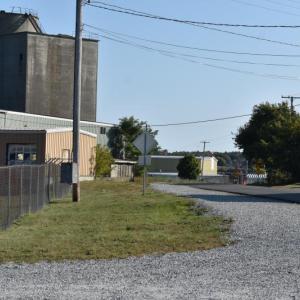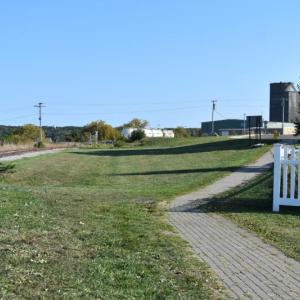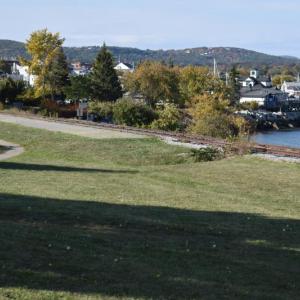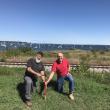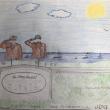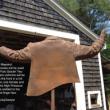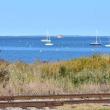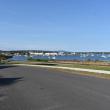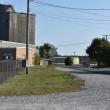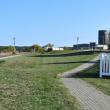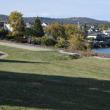Proposed El Faro Salute! memorial rises as fifth anniversary of sinking nears
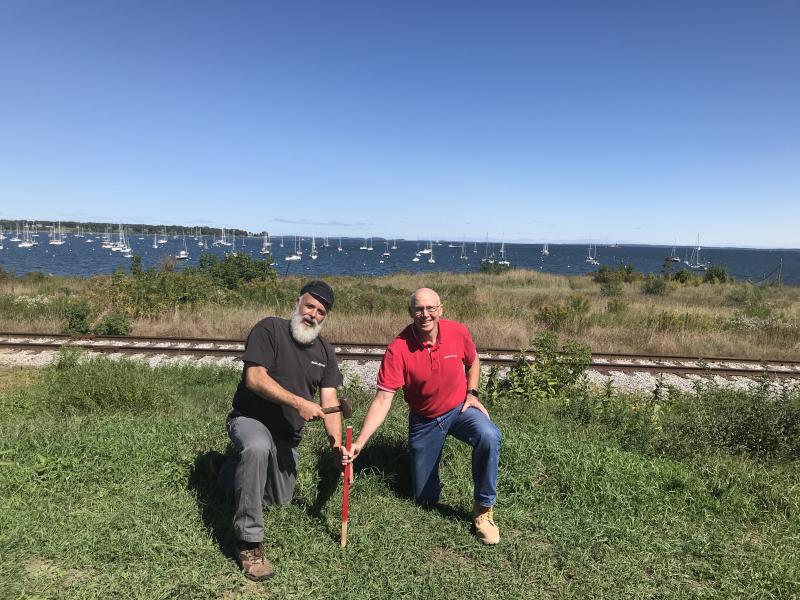 Sculptor Jay Sawyer (aka JBone) and fellow Maine Maritime Academy alum Mark Curtis identify the site of an “El Faro Salute!” memorial proposed for Rockland. (Photo courtesy Jay Sawyer)
Sculptor Jay Sawyer (aka JBone) and fellow Maine Maritime Academy alum Mark Curtis identify the site of an “El Faro Salute!” memorial proposed for Rockland. (Photo courtesy Jay Sawyer)
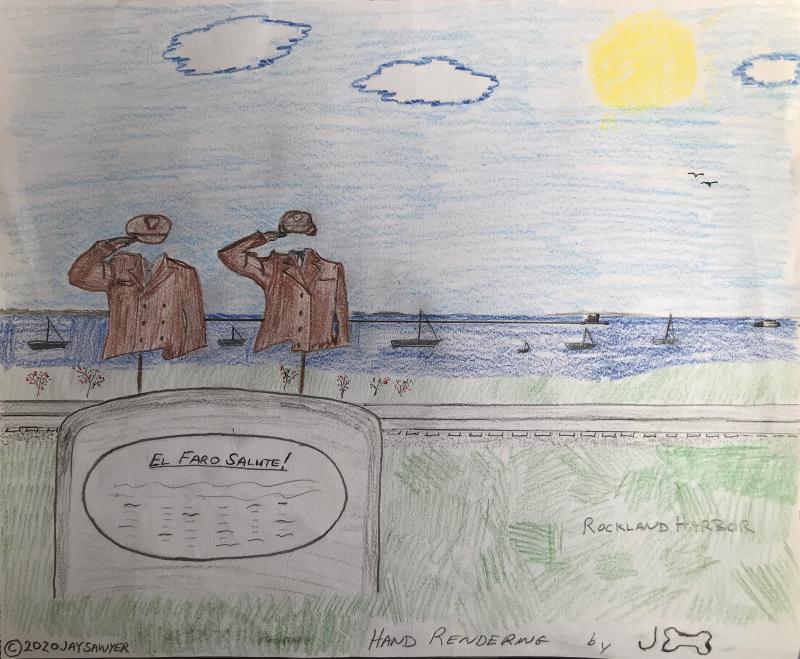 El Faro Salute! artist rendering. (Photo courtesy Jay Sawyer)
El Faro Salute! artist rendering. (Photo courtesy Jay Sawyer)
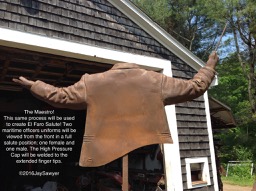 Previously thought of as Jay Sawyer’s biggest achievement, privately commissioned piece “The Maestro” and its process of creation are serving as models for the new project. (Photo courtesy Jay Sawyer)
Previously thought of as Jay Sawyer’s biggest achievement, privately commissioned piece “The Maestro” and its process of creation are serving as models for the new project. (Photo courtesy Jay Sawyer)
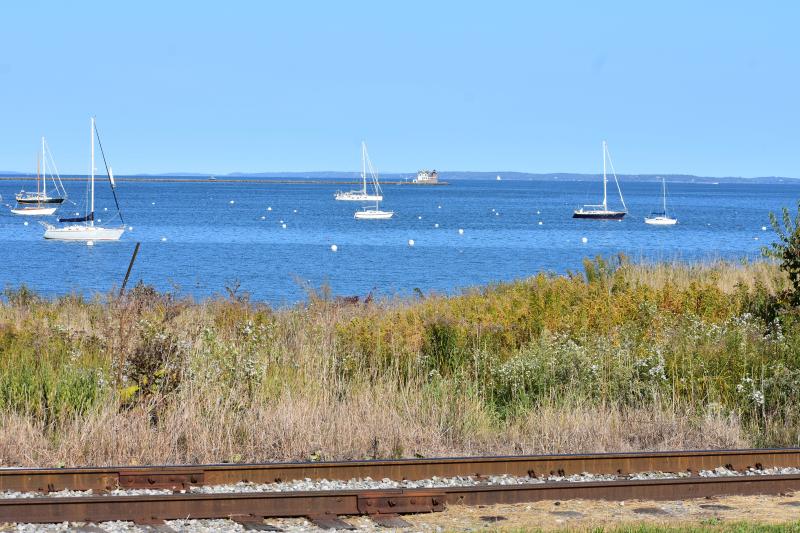 (Photo by Sarah Thompson)
(Photo by Sarah Thompson)
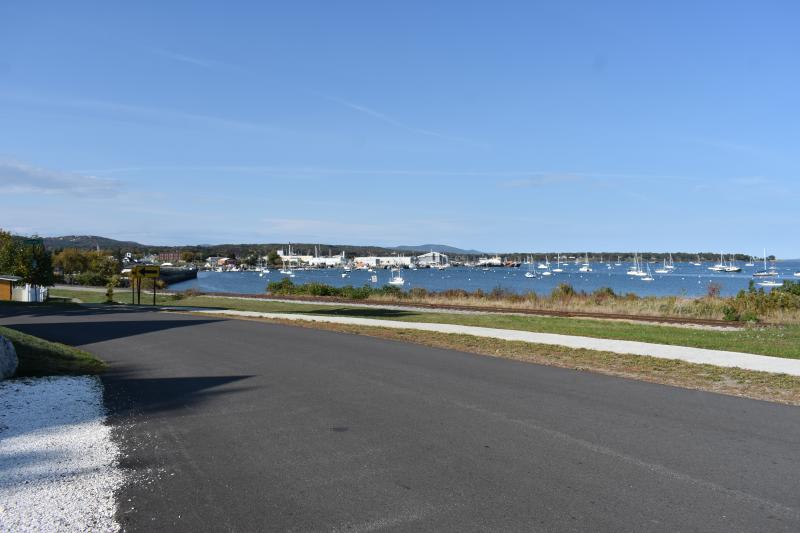 (Photo by Sarah Thompson)
(Photo by Sarah Thompson)
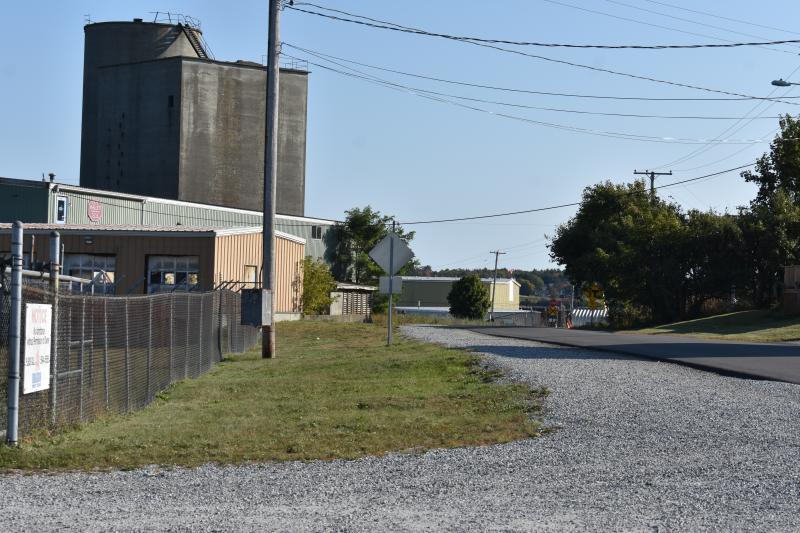 (Photo by Sarah Thompson)
(Photo by Sarah Thompson)
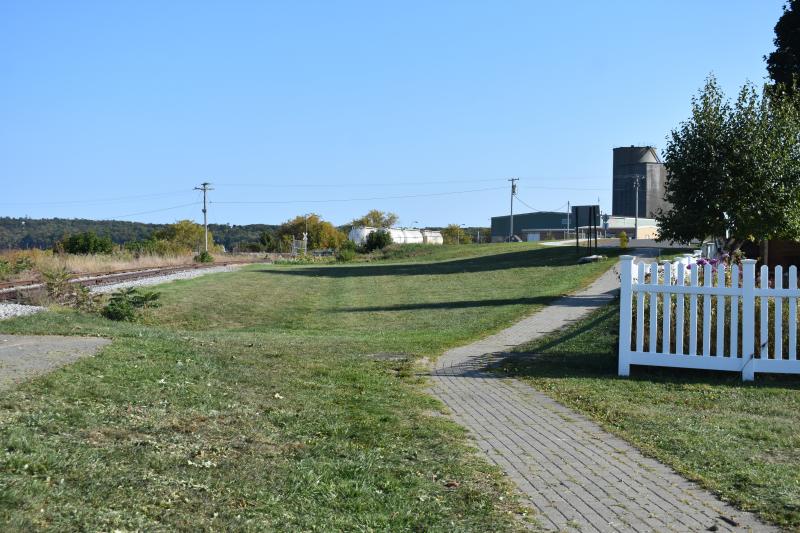 (Photo by Sarah Thompson)
(Photo by Sarah Thompson)
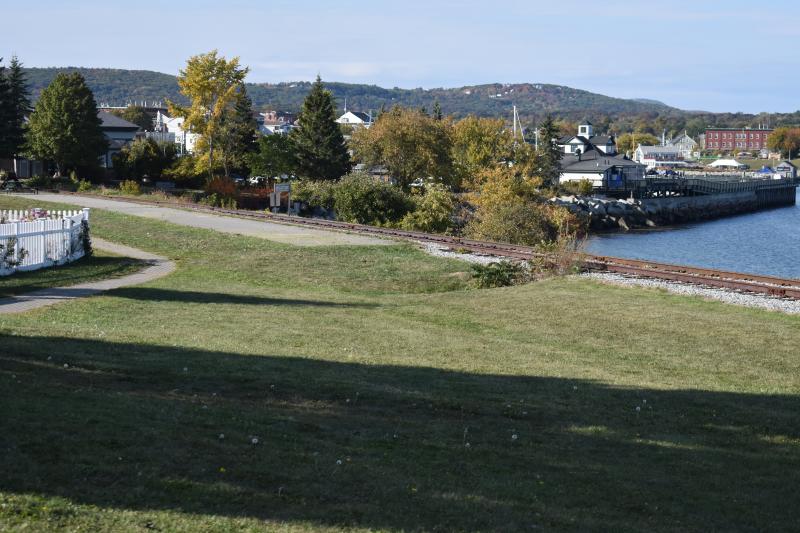 (Photo by Sarah Thompson)
(Photo by Sarah Thompson)
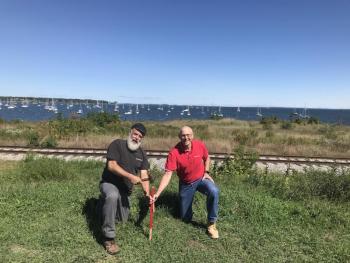 Sculptor Jay Sawyer (aka JBone) and fellow Maine Maritime Academy alum Mark Curtis identify the site of an “El Faro Salute!” memorial proposed for Rockland. (Photo courtesy Jay Sawyer)
Sculptor Jay Sawyer (aka JBone) and fellow Maine Maritime Academy alum Mark Curtis identify the site of an “El Faro Salute!” memorial proposed for Rockland. (Photo courtesy Jay Sawyer)
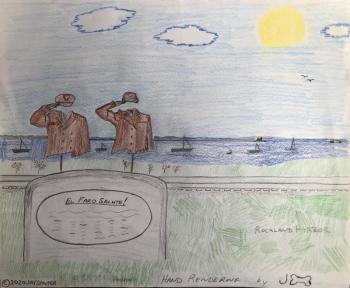 El Faro Salute! artist rendering. (Photo courtesy Jay Sawyer)
El Faro Salute! artist rendering. (Photo courtesy Jay Sawyer)
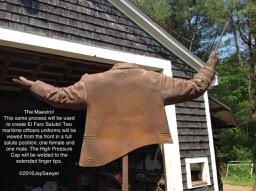 Previously thought of as Jay Sawyer’s biggest achievement, privately commissioned piece “The Maestro” and its process of creation are serving as models for the new project. (Photo courtesy Jay Sawyer)
Previously thought of as Jay Sawyer’s biggest achievement, privately commissioned piece “The Maestro” and its process of creation are serving as models for the new project. (Photo courtesy Jay Sawyer)
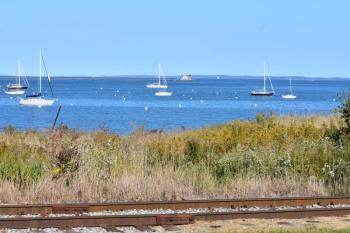 (Photo by Sarah Thompson)
(Photo by Sarah Thompson)
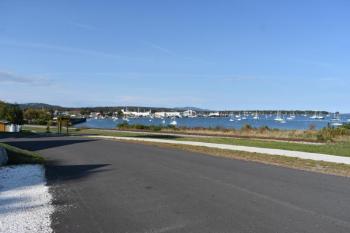 (Photo by Sarah Thompson)
(Photo by Sarah Thompson)
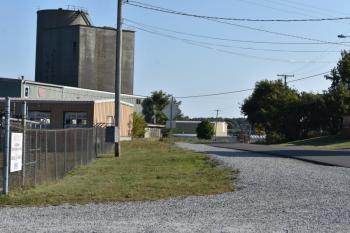 (Photo by Sarah Thompson)
(Photo by Sarah Thompson)
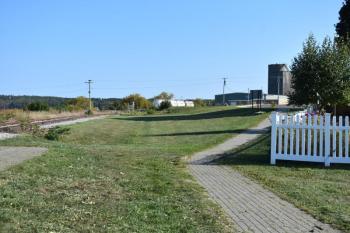 (Photo by Sarah Thompson)
(Photo by Sarah Thompson)
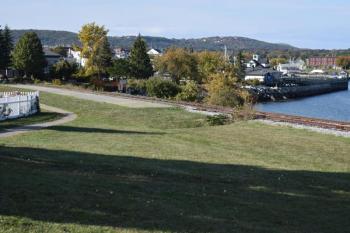 (Photo by Sarah Thompson)
(Photo by Sarah Thompson)
ROCKLAND — Maine Maritime Academy grad and former merchant marine Jay Sawyer is using his second career as a sculptor to erect an El Faro memorial in Rockland.
The ambitious project, named the El Faro Salute, is now in its fifth year of composition, only a few days shy of the fifth anniversary of the cargo ship’s sinking, October 1, 2015, leaving 33 crew members, including two Rockland residents and two other Maine residents, lost at sea.
As fundraising grows for the $135,000 project, so too does the trust and respect towards the sculptor and his proposed memorial by the departeds’ families, as well as the therapeutic gratification gained by those families, the sculptor, and the community.
Sawyer’s project is on track, albeit deliberately slow and steady. He first spent several years in Phase I, quietly and indirectly reaching out and wading into the sensitive waters of the families’ grief.
His diligence in contacting third parties, gaining the trust and proving his legitimacy to the third parties, and through those parties sending letters of introduction to the families, has culminated with the temporary marking of the memorial’s future Rockland home between the Crescent Street walking path at Sandy Beach Park and the entrance to Dragon Products’ marine terminal.
In a year or more, if the final two-thirds of the fundraising goal are met, two metal uniform jackets and two hats, representing a male and a female, will tower upward in permanent salute, while a plaque beneath gives credence to the names of all 33 lost souls.
According to Sawyer, placing the uniforms above eye level forces the observers to tilt their chins and gaze skyward. In the background, the Rockland Breakwater Lighthouse waxes symbolic to the region’s maritime history as well as the fact that El Faro is Spanish for “the lighthouse.”
Supported by his first choices – Penobscot Bay Marine Museum, Rockland, and the region’s plethora of Maine Maritime Academy graduates, including at least one who works for property owner Dragon Products, Sawyer is on his way to bringing home a “much needed” memorial.
“It’s going to be very rewarding. I know it already is,” said Sawyer.
Sawyer said the project goes well beyond just memorializing. A big part is to help the families heal.
“Just having an appreciation for the grief that these people are experiencing, the shock of this, and realizing that it never should have happened,” he said. “And to just let them know that in this maritime community there’s compassion for them. It’s already working in that regard. I know it’s working. I’ve spoken with families, and they tell me this. They tell me repeatedly. Even families that don’t live in Maine, it’s a help to them, too. They are truly honored to think that their loved ones are being memorialized.”
A place for ME
In the storage areas of four Maine homes, the artifacts of El Faro shipmates rest in preservation. Each keepsake is a separate, private honorarium to each soul. In those homes, those names remain individualized, separated from the outer Maine community and their non-biological MMA and Merchant Marine families.
“I think people look to memorials as a recognition of what has been lost,” said Karen Smith, executive director, Penobscot Marine Museum.
“The memorials help people know that their loved ones have not been forgotten and that families are not alone in their grieving.”
From the greater perspective, one might ask: if loved ones have daily reminders of their departed, why do they travel to see their departed’s name on small plaques in public places?
Three ambitious El Faro memorials already exist, including a large one in Jacksonville, Florida, and one in Puerto Rico. Most, if not all of the families have traveled to Jacksonville, according to Sawyer. The trip has helped with some of the grief, however, the majority of the crew were from Florida. The five departed in the northern region were not as ingrained in that southern community.
Generally, cemeteries and gravestones mark a departed’s final resting place. The bodies of the El Faro crew were never recovered. These memorials are their gravestones.
“Sadly, it’s just the closest you can come,” said Sawyer. “[Jacksonville’s memorial is] special and it certainly helped to grieve,” he said. “But, it’s 15 hundred miles away.”
Why not Castine, home of Maine Maritime Academy?
Many people have ask Sawyer why he chose Rockland and no other. The answer has many pieces.
Sawyer said he believed that this memorial would turn into something bigger, and therefore needed a more accessible location.
“I never had a Plan B,” he said. “I just tried to work hard enough that there was not a need for Plan B.
The proposed location has the city and cultural aspects of Rockland one one side and the gritty industrial atmosphere of Dragon Cement and Rockland Marine on the other.
“It literally is the intersection of culture and industry, which is pretty neat in that Rockland was an industrial town, a working community turned cultural,” he said.
After finishing his time as a merchant marine and welder, Sawyer took the iron and steel he was manipulating to stand tough, and began working with them for peace and artistry. As Rockland became a Main Street Community, Sawyer presented his first art show.
“It is a parallel path for both of us,” he said. “For me and the City of Rockland. To go from this blue collar kind of mindset, if you will, to cultural. And then to have this site be right smack in the middle of that.”
The memorial will also play a separate minor role in recognizing an industry.
“It’s kind of funny,” he said. “You tell somebody you’re in the Merchant Marines, and they think you’re in the Armed Forces. So, it might go in that direction where it [the memorial] gives people a little bit of interest, bringing to light what these people do, and the role they play for people around and all.”
The role of El Faro was to help maintain a lifeline to Puerto Rico. The cargo ship was one of two that ran routinely from Jacksonville to Puerto Rico and then back. While one was heading down, the other was going up.
It was a critical role, according to Sawyer.
A former MMA grad and merchant marine with no previous experience at sea/a current sculptor with no experience with public memorials
News of the El Faro’s sinking “hit me like a punch in the gut,” said Sawyer.
That gut reaction continued in the days to follow as details emerged about the cargo ship’s final days.
Sawyer didn’t have the maritime background of lobstering or deep-sea travel that many other cadets had upon entering the Academy. Even growing up in Maine revealed only the rare story of sea-related tragedy, usually from literature. His marine experience came after he started shipping. That gut feeling after the El Faro sinking that manifested into a proposed memorial came from the same area of the gut that learned first hand the risks of sea life.
As a new seafarer, “you’d experience some storms and if that was the first time you’d been on a ship that size, when she rolls over, and hangs there for a bit, you really wonder if she’s coming back up,” he said. “I’ve heard it referred to before as high risk/high reward.”
Though the tragedies are rare, the stakes are high, and the vulnerability winds its way in.
“As a young person, you’re relying on those above you, and they have the experience,” he said. “For myself, I was trained as an engineer. So, I didn’t know much about boat handling of anything like that.”
Now, as an artist, Sawyer is inching his way into memorials and grief from an unconditional standpoint. Usually, someone with money for a memorial then commissions an artist to do the work. With urging from the community, Sawyer – the artist – is using his own heart – his own punch in the gut – to manifest an idea into a reality. His secret weapon is his connections to the Academy and to the Merchant Marines.
“It’s kind of funny,” he said. “You tell somebody you’re in the Merchant Marines, and they think you’re in the Armed Forces. So, it might go in that direction where it gives people a little bit of interest, maybe, but at least it just brings to light about what these people do, and the role they play for people around and all.
Making connections
Sawyer works often with found objects and industrial salvage.
“You’re saluting the life of that material,” he said.
Though this is Sawyer’s first public memorial, he’s created several small pieces honoring his own friends and family members. About three years ago, he spent a winter creating a sculpture for his father-in-law, who’d recently passed. Sawyer’s intent was to make an object. He had not idea of how much the process would affect him.
“When I got that done, I was just shocked at how good I felt,” he said. “And how therapeutic that was. It really did blow me away. It wasn’t something I just read.”
Having experienced the unintended therapy of his involvement in that personal piece, Sawyer is open to involvement of others in the El Faro Salute. A male uniform is on loan from a MMA alumn to act as a model. People have modeled for him in those uniforms, MMA alum Mark Curtis, of Dragon Products helped with the photo op to drive down a location stake. Grieving families are excited to assist with future welding and installation.
“I had experienced it,” he said. “And that’s why I wanted to let others experience, too.”
For more information, visit Jay Sawyer’s website for this project: El Faro Salute, www.elfarosalute.com/
Reach Sarah Thompson at news@penbaypilot.com

